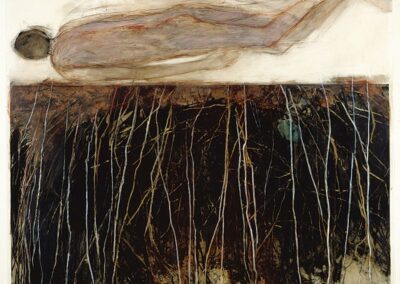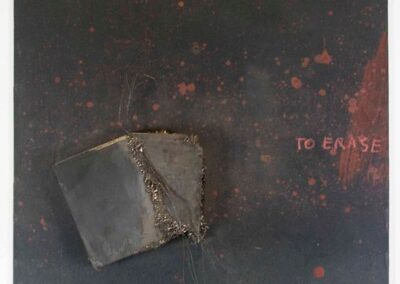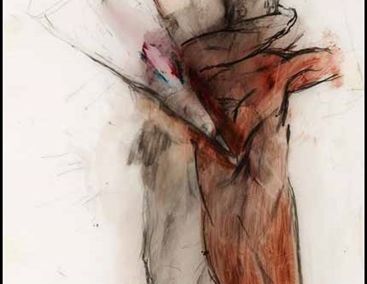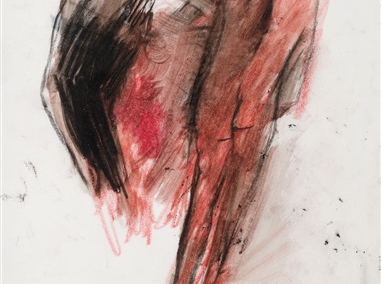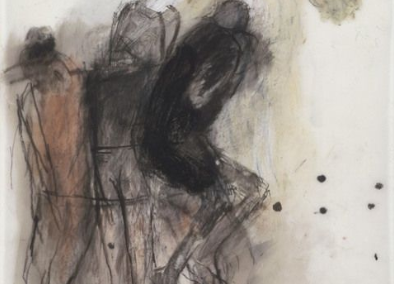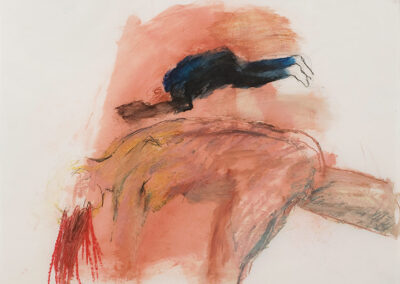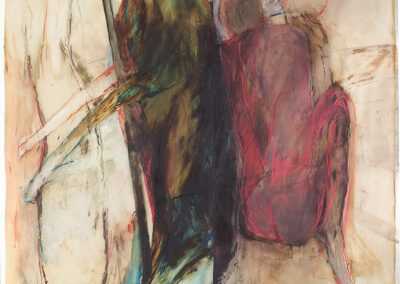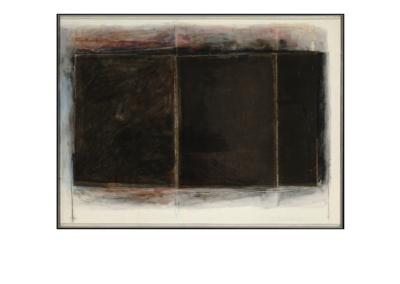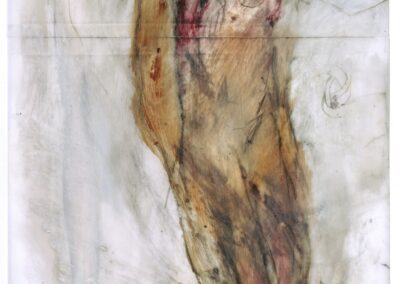Our latest featured artist in AIH Studios’ Artists You Need To Know is someone as eloquent in words as she was evocative in her artworks. Last summer the AGO – Art Gallery of Ontario had several of Betty Goodwin‘s larger works on display, as well as many of her notebooks and sketchbooks.
Goodwin’s own words: “I deal with the human body…, other times it is like the memory of the body….. I used the sitz bath, the bed, I have used clothes. I guess these are the elements that I need to best express what I am thinking about. But it is true my concerns do take in the body and its various aspects, even in terms of time or passage. It’s all concerning humanity.” (1995)
“Betty Goodwin’s work had long since claimed an iconic presence in the recent history of Canadian art by the time she died in 2008. The scope and scale of her productivity belies the well-known fact that she was a late starter. For years she searched, often with an astonishing degree of self-critical awareness, for the moment and the milieu that would finally allow her in mid-life to make the work that inspired a celebrated career. That work eluded easy categorization as it developed through several media. A freedom to explore new media and approaches to art-making characterized the breakdown of artistic canons in the 1970s. In Goodwin’s case, though acutely aware of and stimulated by the artistic developments unfolding around her, she also always appears to have seen her own activity as boundless in the sense that she often described the process of making a piece as one that was open-ended, without a prescribed vision of its resolution. Over the years she embraced an astonishing range of materials and scale in her work, always making her signature drawings but also conceiving and realizing major sculptural installations that incorporated drawing.” (from the Gershone Iskowitz Foundation, whom recognized Goodwin for her art and influence in 1995).
-

Swimmer No. 3, 1983
-

Untitled, 1986.
-

Carbon, 1987
-

Je suis certaine que quelqu’un m’a tuée, 1985
-

Vest, 1972
-

Figure Animal Series 1, 1990–91
Goodwin, who passed in 2008, is still a major influence on many artists today, and more about her very personal, but also political, practice, can be found at National Gallery of Canada, or MAC Musée d’art contemporain de Montréal.
Several articles on Goodwin’s influence and ideas can be found here, at Canadian Art’s website.
We’ve only shared a small number of works, considering how prolific Goodwin was, during her life: her artwork “is an exemplar of the poetic power of pain, loss, grief and the resilience of the human condition.” (Canadian Art, 2008).

